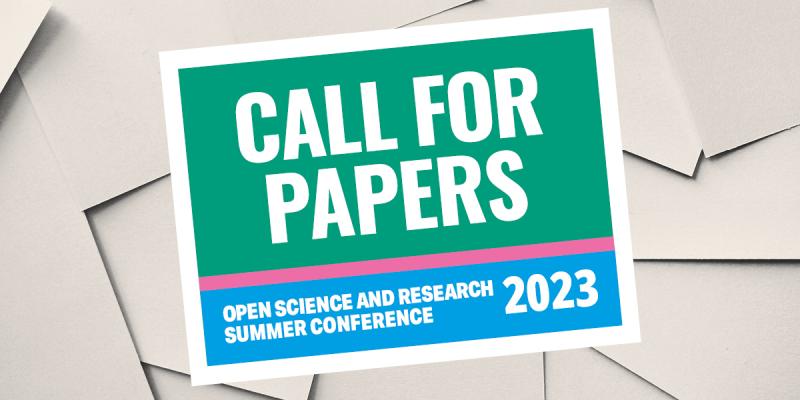Researchers acknowledge and respect the work and achievements of other researchers by citing data created by others clearly and appropriately.
Digital research data, whether self-collected or collected by someone else, can be used as source material in research and theses in the same way as research literature and statistics. In line with good scientific practice, researchers acknowledge and respect the work and achievements of other researchers by citing the data created by others clearly and appropriately.
It is worthwhile to include one’s own digital research data in a CV and in one’s own publications. This increases the researcher’s merit as well as the findability, reproducibility and visibility of the material.
Citing data in a nutshell
It is important to cite digital research data in as much detail as possible so that other users can locate the material for their own use. A citation must include at least the following:
- Creator(s): The person or organisation responsible for the actual content of the data. There may be several creators. The affiliated organisation of the creator should also be mentioned.
- Year of publication: The year in which the research data was published.
- Title: The full title of the research data and the year in which the data was collected.
- Version: The version number and date time stamp of the digital research data.
- Publisher/distributor: The organisation/repository that stores the data in the long term, and publishes and shares it in accordance with agreements and terms of use.
- Digital location or identifier: A web address or persistent identifier (e.g. URN, DOI) that uniquely identifies the data.
Citation templates
Digital research data should be cited in bibliographies, tables, diagrams and within the text itself. The citation examples below can be used as they stand or be modified to meet the requirements of a publication, publisher or the practice in your field.
Bibliography citations
The data has been created by one or more people:
Grönlund, Kimmo (Åbo Akademi University) & Kestilä-Kekkonen, Elina (University of Tampere): Finnish National Election Study 2015 [dataset]. Version 1.0 (2016-06-13). Finnish Social Science Data Archive [distributor]. http://urn.fi/urn:nbn:fi:fsd:T-FSD3067
The data has been created by a person and an organisation:
Finnish Literature Society & Koski, Kaarina (University of Turku): Death, Loss and Memory 2014 [dataset]. Version 1.0 (2017-02-08). Finnish Social Science Data Archive [distributor]. http://urn.fi/urn:nbn:fi:fsd:T-FSD3138
The data has been created by an organisation or organisations:
ISSP Research Group (2016): International Social Survey Programme: Citizenship II – ISSP 2014. GESIS Datenarchiv, Köln. ZA6670 Datenfile Version 2.0.0, doi:10.4232/1.12590
In-text citations
In the body of the text, digital research data is cited using the name of the creator(s). If there is no information on the person(s) involved, the data can be cited using the title. The year in which the data was collected is also included in the citation.
Thirty-five percent of respondents in the most recently gathered parliamentary election research said that they had signed the national citizens’ initiative (Grönlund & Kestilä-Kekkonen, 2015).
Citations in diagrams and tables
In tables and diagrams, it is a good idea to cite at least the title of the research data and a possible archival number or equivalent identifier.
Table 1. At present, a large number of unfounded claims are made in social media and in public in general, aiming to dispute scientific findings (%).
|
|
% |
|
Strongly agree |
28 |
|
Agree to some extent |
39 |
|
Can’t say |
27 |
|
Disagree to some extent |
5 |
|
Strongly disagree |
1 |
|
TOTAL |
100 |
Source: Finnish Science Barometer 2016 (FSD3137)
Hannele Keckman-Koivuniemi, Information Services Manager, Finnish Social Science Data Archive
Further information:
Data management guidelines [online]. Tampere: Finnish Social Science Data Archive [administrator and producer]. <http://www.fsd.uta.fi/aineistonhallinta/en/>. urn:nbn:fi:fsd:V-201504200001
Keckman-Koivuniemi, Hannele & Kleemola, Mari (2006). Opas kvantitatiivisten tutkimusaineistojen jatkokäyttöön. Tampere: Yhteiskuntatieteellinen tietoarkiston julkaisuja 2.
IASSIST (2012). Quick Guide to Data Citation [online]. http://www.icpsr.umich.edu/files/ICPSR/enewsletters/iassist.html [cited 21.2.2017].
Rauber, Andreas & Asmi, Ari & van Uytvanck, Dieter & Pröll, Stefan (2015) [online]. Data Citation of Evolving Data. Recommendations of the Working Group on Data Citation (WGDC). https://www.rd-alliance.org/system/files/RDA-DC-Recommendations_151020.pdf [cited 21.2.2017].
Finnish Standards Association SFS (2012). SFS5989. Lähde- ja tekstiviitteitä koskevat ohjeet.
You might also be interested in
Tämä teos on lisensoitu Creative Commons Nimeä 4.0 Kansainvälinen -lisenssillä. Detta verk är licensierat under en Creative Commons Erkännande 4.0 Licens. This work is licensed under a Creative Commons Attribution 4.0 International license.


